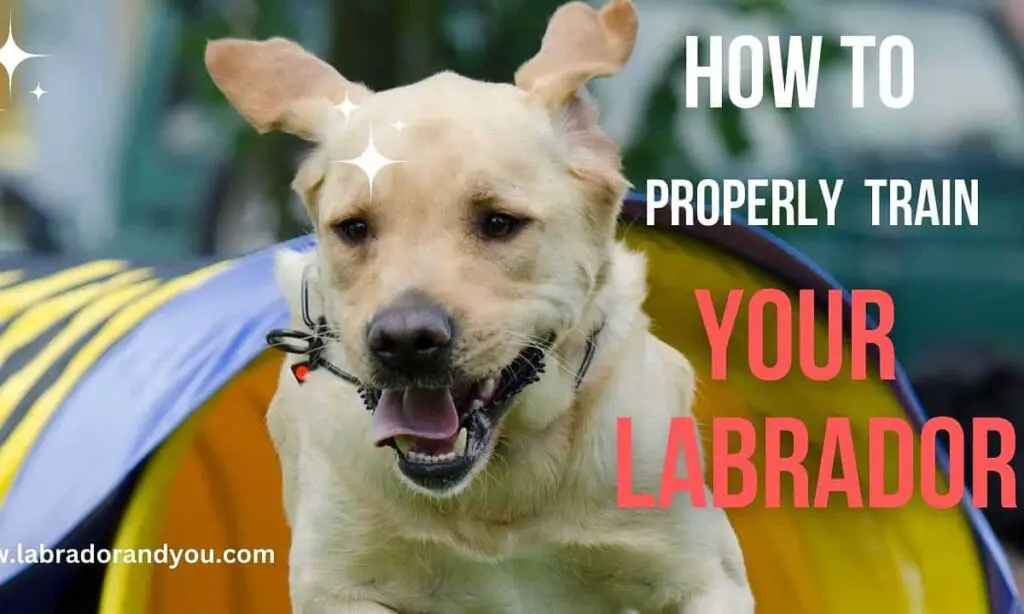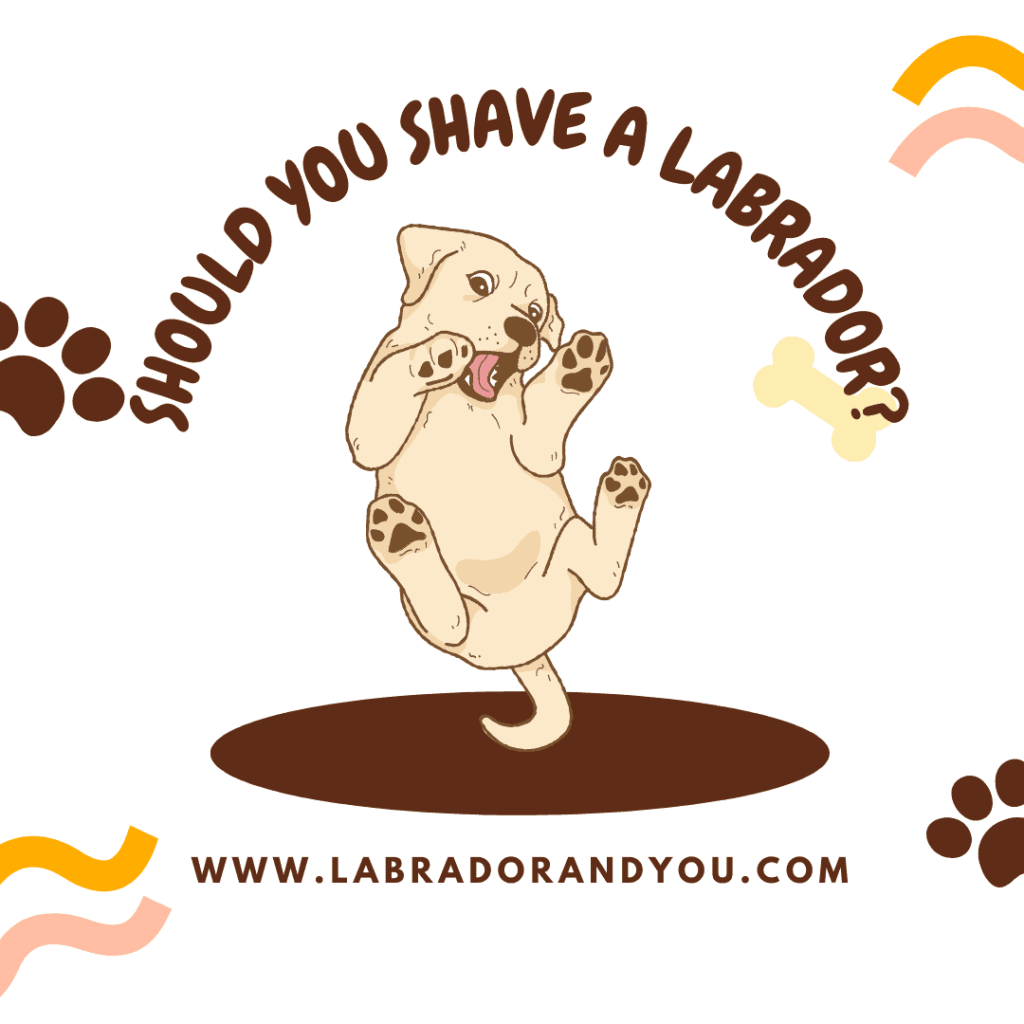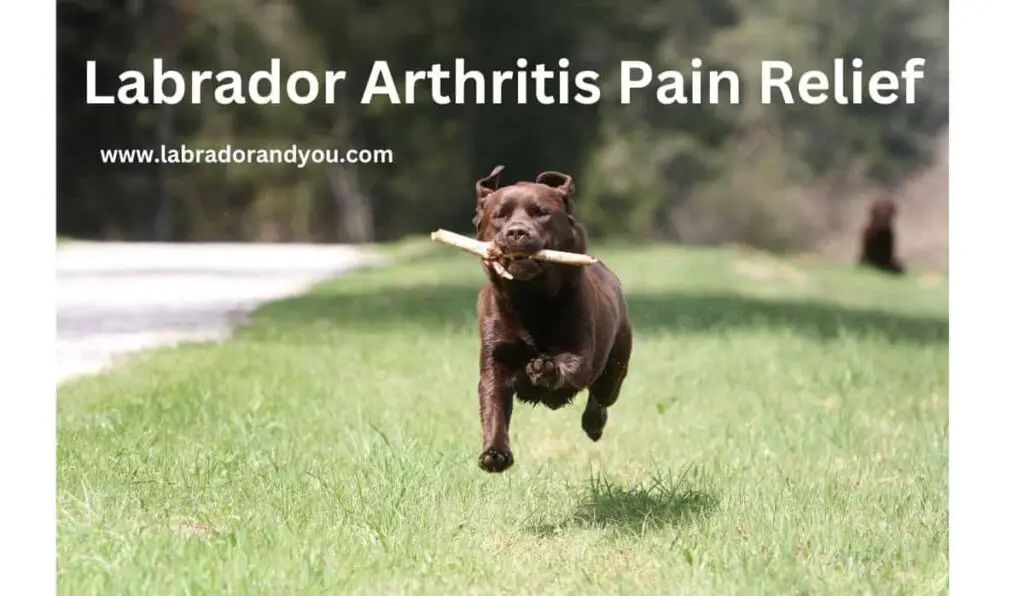Is your Labrador Retriever struggling with separation anxiety? This condition is a common behavior problem that affects dogs of all breeds and ages. When left alone, dogs with separation anxiety can display a range of behaviors, including destructive chewing,
- Excessive barking and whining,
- Urinating, urine marking, and defecating indoors,
- Trying to escape,
- Excessive salivation,
- Intense pacing.
- Destroying furniture
If your Labrador Retriever exhibits any of these symptoms, relieving their anxiety and preventing further damage to your home is important. Training and management strategies can help reduce your Labrador Retriever’s separation anxiety.
do labs have separation anxiety?
Separation anxiety is a behavioral disorder where a dog experiences distress when left alone or separated. Labradors are a popular breed and highly sought-after due to their friendly and sociable nature.
Hence, like any other dog breed, labradors do experience separation anxiety. It can manifest in various ways and be challenging for pet owners.

Symptoms of Labrador Retriever Separation Anxiety
As dog owners, you must know about your labrador’s usual behavior. Any sudden change in your pet’s behavior might indicate separation anxiety. Some common dog separation anxiety symptoms include:
Destructive behaviors:
If your labrador retriever starts chewing or scratching doors, furniture, or anything else while you’re away, it might be a sign of a dog’s stress.
Excessive barking and howling:
If your labrador becomes excessively vocal and barks or howls continuously when you’re not around, it could be a sign of anxiety.
Escape attempts:
If your labrador tries to escape from the house or crate when left alone, it might indicate it is not crate-trained properly.
Frequent urination or defecating:
If your labrador starts to urinate or defecate in the house when left alone, it shows behavior problems. However, this can also be a weak sphincter or a kidney disease. Better to get them checked out
Pacing or restlessness:
It is a sign that your labrador cannot settle down or the animal’s fearful. Some of these symptoms of separation anxiety can also indicate other medical conditions or behavioral issues.
Therefore, it’s necessary to consult with your veterinarian to rule out any underlying health problems before addressing separation anxiety.
What Do Dogs Develop Separation Anxiety?
Dogs are people pleasers and thrive on human interaction and companionship. You are everything in a dog’s life. Dogs can become anxious and distressed when left alone or in sudden absence, exhibiting behavior problems that can take a turn for the worse.
Lack of Socialization
Dogs that are not socialized properly may need help when left alone. If your pup has yet to have many opportunities to interact with other dogs or people, they may feel uncomfortable when you’re not around. Socialization is crucial for most dogs.
Exposing them to different environments, people, and animals is essential to help them develop into well-adjusted adults.
Previous Trauma or Abandonment
Dogs that have experienced trauma or abandonment issues may be more prone to anxious behaviors.
Shelter or rescue organizations may have subjected your dog to significant stress before you adopted them. Being patient with these dogs and providing them with a safe and secure environment is crucial.
Overdependence on Their Owner
Certain dogs develop an excessive attachment to their owners, leading to difficulty coping with separation.
If you spend a lot of quality time with your dog and never give them a chance to be independent, they may become anxious when you’re away. As labrador owners, you must allow them to be alone and teach them polite house manners.
Genetics and Breed Predisposition
Certain mixed breeds of dogs may be more prone to separation anxiety than others. For example, dogs with solid attachment instincts, such as labrador retrievers and Cocker Spaniels, are likelier to experience separation anxiety.
Additionally, if your family dog breed or littermates have a history of separation anxiety, your dog may be more likely to develop this issue.
Age
An adult dog is more prone to separation anxiety than younger dogs. As dogs age, they become more dependent on their owners and clingy. Adult dogs may be more likely to experience health issues contributing to anxiety and stress.

Problems To Rule Out Before Determining Labrador Retriever Separation Anxiety
Before diagnosing separation anxiety in labs, let’s eliminate other potential issues.
Lack of Exercise and Mental Stimulation
Dogs require daily exercise and mental stimulation to stay healthy and happy. Inadequate physical exercise or mental stimulation may cause your dog to feel restless and prone to destructive behavior.
This can even elicit an aggressive reaction from your dog, so be careful. Proper exercise is very crucial.
Boredom
Dogs are social creatures that need stimulation. If your dog is left alone for long periods with nothing to do, it can chew furniture and create another ruckus.
Ensure your dog has plenty of chew and puzzle toys to keep them occupied while you are away. Consider hiring a dog sitter to come and spend a couple of hours with your furry friend while you are away.
Medical Conditions
Several medical conditions can cause behavior changes in dogs. Some medical conditions that can cause behavior changes include retinal atrophy, hip dysplasia, thyroid problems, urinary tract infection, bladder stones and even arthritis.
Fear and Phobias
Dogs can develop fear and phobias, such as loud noises, new people, or other animals. They may even have a feared or disliked person. This usually happens due to incomplete house training.
Work with a professional dog trainer or certified applied animal behaviorist to help your dog overcome their fears.
Lack of Training
Dogs need structure and routine. Inadequate training may produce anxiety in your dog, as it fails to comprehend its expected behavior in your absence.
Ensure that you train your furry friend in basic commands and behavior. Consider enrolling your dog in obedience training sessions to help them learn how to behave when you are not around.
Changes in Routine
Any changes in their routine can affect dog’s behavior because they are creatures of pattern.
- Have there been any recent changes in their routine?
- Have you moved to a new house?
- Started a new job with different hours?
Even small changes in routine can affect your furry friend’s behavior.
14 Proven Steps on how to get rid of dog separation anxiety
Thankfully, you can take measures to avert separation anxiety. In this way, you can aid your dog in feeling more at ease during your absence.
1. Crate Training Your Dog
Crate training is a helpful training technique that prevents separation anxiety. When used correctly, a crate can be a safe space for your dog to retreat when overwhelmed.
- Introducing your dog to the crate gradually and positively is essential.
- You can use treats and praise to create a positive association.
- You may do this by regularly brushing their denser coats.
Over time, dogs with separation anxiety should view their crate as a cozy den where good things happen. Crate training is imperative for a well-conditioned dog, as per a veterinary behaviorist.
2. Teach Your Dog To Be Alone
Just like any other skill, being alone is something that dogs can learn. Commence by gradually increasing the time you leave your dog alone as they grow.
- Starting with short intervals.
- Use positive reinforcement to reward calm behavior, such as lying down or playing with a toy.
- Make sure your dogs are taught polite house manners.
- Be patient and do not rush the process; every dog is different and will take time to adjust.
3. Don’t Focus On Hellos Or Goodbyes
As much as we may want to say a long goodbye or hello, keeping these interactions low-key is essential for a new puppy.
Saying goodbye or hello in an overly excited or emotional tone can signal to your dog that your departure or arrival is a big deal, peaking their anxiety. Keep your comings and goings routine and avoid making a fuss.
4. Make Sure Your Dog Gets Plenty Of Exercise
Exercise is a great way to help your dog release excess energy and reduce stress. Ensure high-energy dogs like Labs get plenty of physical activity daily through walks, runs, or playing fetch.
A tired dog is a happy dog. It’ll be more likely to relax and rest. Leave behind lots of chew toys, puzzle toys, or a food-stuffed toy, maybe.
5. Don’t Give New Puppy Any Reason To Believe Your Absence Is A Big Deal.
Similarly to not making a big deal out of hellos and goodbyes, avoid making your dog feel that your absence is a big deal.
- Avoid behavior your dog might associate with your departure in the dog’s mind, such as putting on your shoes or picking up your keys.
- Do these things randomly so your dog doesn’t start to anticipate them.
6. Desensitization And Counter-Conditioning
Desensitization and counter-conditioning help your dog become less reactive to stimuli that trigger their anxiety. Gradually expose your dog to the trigger in a controlled and positive way and pair it with something they enjoy, such as delicious food or playtime.
Over time, your dog should start associating the trigger with positive experiences, and their worst separation anxiety should decrease. Here’s how it works:
- Choose a word or phrase you use exclusively when leaving your dog. For example, “I’ll be back soon.”
- Repeat the word or phrase frequently throughout the day in a happy and cheerful tone.
- Start associating the word or phrase with positive experiences, such as treats or playtime.
- Once your dog associates the word or phrase with positive experiences, they will be more relaxed when you leave.
Desensitization involves exposing your dog to situations that trigger their anxiety but in a controlled environment. It helps them get used to the situation. Here’s how to do it:
- Start by exposing your dog to a situation that triggers their anxiety, such as picking up your keys or putting on your coat.
- Then, distract them with a toy or treat and wait for them to calm down.
- Repeat the process, gradually exposing them to longer and more intense situations.
7. Clinginess: Playing It Cool
If your dog is clingy and follows you around the house, resisting the urge to give them constant attention is essential.
It can reinforce their dependence on you and make anxiety worse. Reward independent behavior, such as lying in bed or playing with a toy independently.
8. Give Them Space To Be Happy While You Are Gone.
Giving your dog great toys and chews is crucial to keep them engaged. It will keep them entertained. It can give them something to focus on besides your absence. Consider leaving the radio or TV on for background noise, which can comfort many dogs.
9. Gradual Departures:
Gradual departures are a training method that involves leaving your dog briefly and gradually increasing the duration. It helps your dog get used to your absence and teaches them that you will always return. Here’s how to do it:
- Start by leaving your dog alone for just a few minutes.
- Gradually increase the time you spend away from your dog.
- Always return calmly, and don’t make a big fuss when you return.
10. Stay calm:
Your dog loves you and are always attuned to their owner’s emotions. They become nervous if you are upset when you leave your dog. Stay calm and relaxed when you leave and return home. It can help your dog feel more secure. Give them lots of tasty treats.
11. Take Them For A Long Walk Before You Leave.
You may take your dog for a lengthy stroll before your departure. It is an effective method to assist them in feeling calm. They will settle down faster. Plus, it’s an excellent way to bond strongly with your dog! Does this sound fantastic or what?
12. Anxiety-Relief Dog Products If The Situation Is Severe.
Consider using anxiety-relief products if your dog suffers from severe separation anxiety- pheromone sprays, calming collars, and supplements.
Talk to your veterinarian about the best options for your young or older dogs. Every dog is different. Be patient and persistent in finding what works best for your furry friend.
13. Medications For Separation Anxiety In Dogs
Anti-anxiety medications: A veterinarian can prescribe several medications to ease separation anxiety. These prescription medications can help calm your dog and reduce anxiety in a few weeks.
Sedatives: Sometimes, veterinarians prescribe sedatives to help dogs relax in stressful situations. Administering sedatives should occur under the guidance of a veterinarian.
14. best calming aid for dogs with separation anxiety
Exercise:
Regular exercise helps reduce the level of anxiety in dogs. Ensure your dog gets plenty of exercise daily through walks, playtime, or other activities.
CBD oil:
One of the herbal remedies is CBD oil. It has become an increasingly popular natural treatment for treating anxiety in dogs. Conduct thorough research to select a high-quality CBD oil.
Calming scents:
Natural products, such as lavender and chamomile, can have a calming effect on dogs. Consider using a diffuser or double coat of spray that contains these scents to help your dog feel more relaxed.
Are Some Dog Breeds More Prone To Separation Anxiety?
Some dog breeds are more susceptible to separation anxiety than others, which is a common occurrence.
Any dog can experience separation anxiety, regardless of the breed. Some popular dogs with separation anxiety are:
- Labrador Retriever
- German Shepherds
- Cocker Spaniel
- Bichon Frise
- Cavalier King Charles Spaniel
- Jack Russell Terrier
- Golden Retriever
- French Bulldogs
Again each dog has its distinct qualities. Just because a particular breed is more prone to separation anxiety doesn’t mean your dog will experience it too.
Treatment For Mild Separation Anxiety
Various techniques and strategies can treat mild separation anxiety, including:
- Leave your dog with something comforting – Leaving your dog with an item with your scent or a favorite toy can help them feel more comfortable when you’re not around.
- Don’t make a fuss when leaving or returning – When you leave or return, don’t make a big deal out of it. Instead, keep it calm and low-key.
- Establish a routine – It can help your dog know what to expect and reduce anxiety.
- Consider doggy daycare or a pet sitter – If you’re away from home for extended periods, consider hiring a pet sitter or enrolling your dog in dog daycare.
Treatment For Moderate Separation Anxiety
Moderate separation anxiety may require more intensive treatment, such as:
- Medication – To reduce a dog’s anxiety levels, veterinarians may prescribe anti-anxiety medication.
- Professional dog training – A professional dog trainer can help you teach your dog coping mechanisms and behavior modification techniques.
- Consider a calming aid – Calming aids, such as pheromone sprays or calming collars, may help your dog relax.
FAQ On labrador retriever separation anxiety
Do Labradors Like To Be Left Alone?
Labradors generally don’t like to be left alone, as they are social animals that enjoy human company.
At What Age Do Labs Calm Down?
Labs calm down around 2 – 3 years of age. It varies depending on the individual average lifespan of the dog.
Do Labrador Retrievers Suffer From Separation Anxiety?
Labrador retrievers are prone to separation anxiety, resulting in destructive behavior, excessive salivation, and other separation anxiety issues.
What Can I Do To Help Improve His Separation Or Anxiety?
To help ease separation anxiety in labrador retrievers, you can try desensitization techniques, provide food puzzle toys, and seek professional help.
How Can I Tell If My Dog Has Separation Anxiety?
Signs of separation anxiety in dogs include excessive barking, destructive behavior, and unfortunate accidents.
Should I Give My Dog Separation Anxiety Medication?
Giving your dog separation anxiety medication should only be considered as a last resort and under the guidance of a veterinarian.
What Triggers Separation Anxiety In Dogs?
Triggers of separation anxiety in dogs can include a change in routine, a new pet or family member, or a traumatic event.
What Should Be Done Before Departures?
Before leaving your dog alone, ensure it can access plenty of water and a comfortable, relaxing space.
What Should I Do If I Come Home To A Mess?
If you come home to a mess, try not to punish your dog, as this can worsen anxiety. Instead, work on preventative measures and seek professional help if necessary.
My Dog Starts To Get Anxious Even Before I Leave. What Can I Do?
To help your dog feel more comfortable, try creating a positive association with departures, such as giving treats or providing a special toy.
What Is The Best Method To Deal With A Labrador Retriever’s Separation Anxiety?
The best method to deal with a labrador retriever’s signs of anxiety is a combination of behavior modification techniques, routine, and patience. Seek professional help if necessary.
Author Profile
- Site Owner And Dog Lover
-
Aritra, the founder of Labradorandyou.com, is a lifelong dog lover whose passion ignited for Labradors for their loyalty and intelligence. With extensive research and personal experiences, Aritra has become a Labrador expert, offering a rich resource on the breed. Labradorandyou.com provides reliable, timely, and evidence-based information, including Labrador-specific product reviews, training techniques, and care tips.
Labradorandyou.com was born out of Aritra's passion and his desire to share his profound knowledge about the breed. The site serves as a comprehensive resource, offering a wealth of up-to-date information for Labrador owners and enthusiasts alike
Also by the author
-
 Lab-TypesNovember 17, 2023Old Dog Seizures: Causes, Symptoms, and Treatment Options
Lab-TypesNovember 17, 2023Old Dog Seizures: Causes, Symptoms, and Treatment Options
-
 Lab-TypesNovember 17, 2023Why Is My Dogs Poop Yellow? 8 Reasons & Solutions
Lab-TypesNovember 17, 2023Why Is My Dogs Poop Yellow? 8 Reasons & Solutions
-
 ReviewsNovember 17, 2023The Only Hill’s Science Diet Review You Need To Read
ReviewsNovember 17, 2023The Only Hill’s Science Diet Review You Need To Read
-
 Lab-TypesNovember 17, 2023How To Adopt An Emotional Support Dog?
Lab-TypesNovember 17, 2023How To Adopt An Emotional Support Dog?





